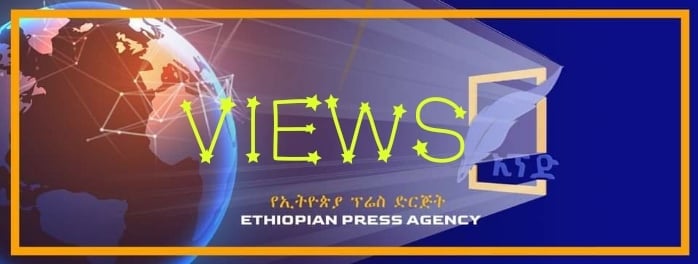
River Nile, one of the longest rivers in the world, has been loaded with controversies despite its potential for regional integration and development. Historically, it enabled and empowered great civilizations, romanticized by powers in the antiquities, and tempted others for conquest and discovery be it from near or afar. The ancient Ethiopian emperors have used the Nile as instrument of threat when the Egyptians delayed sending patriarchs (Abune) head of the Ethiopian Orthodox Church (from 330 AD to 1959) or when Muslim rulers of Egypt mistreated their religious brothers in Egypt. The Egyptians also believed the river to be a gift from the gods for life sustenance, and were inquisitive about it, and wished to discover its source. Eventually controlling the source of the Nile, directly or indirectly through proxies, remained the objective of the officious Egypt. For Ethiopia it remained to be a political realism that occupied its attention and needed to be dealt with accordingly.
Since the water remained vital and controversial, agreements on sharing the Nile water was embarked between the stakeholders of the river at different times. These compacts included the Anglo-Ethiopian Treaty (1902); The Anglo-Egyptian Treaty between Egypt and Britain representing its colonies in the region in 1929 and the 1959 Treaty that allocated water between Egypt and Sudan. Recently in 2015, Ethiopia, Egypt and Sudan, signed a Declaration of Principle, also called the “Nile Agreement” regarding the Great Ethiopian Renaissance Dam (GERD) that Ethiopia is building for hydroelectricity, development and extricate it out of perpetual underdevelopment and abject poverty.
During the Cold War period Ethiopia and Egypt were close to the two rival superpowers — the US and the USSR respectfully, and the region attracted the interest of these powers. Major study and mapping of rivers in Ethiopia for irrigation and hydroelectric generation were conducted by the US Bureau of Reclamation at the request of the Ethiopian government in the late 1950s and early 1960s. The study or geographic survey of the Blue Nile, which is the genesis of the current GERD, can be traced to that period. In Egypt, the USSR built the largest man-made lake, the Aswan High Dam, in the 1960s for a multiple purpose. It stores water for irrigation, generates hydroelectricity, and regulates flooding that occasionally devastates the area. Currently, unlike the Aswan Dam, the GERD has become controversial and attracted more powers as Ethiopia took bold action to build the dam without any external financial support.
For Egypt, controlling the source of the Blue Nile that contributes 80 percent of the Nile water remained its focus as it has geopolitical and security significance and implications for it. Weakening Ethiopia and gradually controlling or getting to the doorsteps of the source of the Blue Nile River, directly or indirectly, had remained the Egyptian agenda for long. Such approach goes back to its desire to annex Sudan or maintaining the Egyptian Sudan unity, like the previous Anglo-Egyptian Sudan Condominium.
That vision failed when Sudan declared its independence in 1956 although some elites emphasized their Arab identity and entertained the idea of Egypt-Sudan unity. Thus, the Egyptian ambition of dominating and completely Arabizing the Nile Valley failed. Nevertheless, the duality of Arab-African identity in the region remains a burning issue. Such was the case in South Sudan until its independence in 1991 and currently the root of conflicts in Darfur and the Nuba region. They challenge their Arabization and imposed Arab identity as they are African.
Referring to the Egyptian expansionism and grand design to undermine Ethiopia, Egypt pursued the strategy of removing Ethiopia from the western littoral of the Red Sea and converts it to an “Arab Lake”. By doing so, Arab countries could have a stranglehold on Israel’s southern flank as well as remove a predominantly Christian Ethiopia from the region. Accordingly, Egypt and Arab countries assisted and abetted an insurgency in Eritrea against Ethiopia by supporting Muslim-dominated Eritrean Liberation Front (ELF). ELF launched a guerrilla war in 1961 to bring about the secession of Eritrea despite Eritrea’s historic, cultural and economic ties with Ethiopia. Gamal Abdul Nassir’s vision in the 1950s was to promote a Pan-Arab and a Pan-Islam unity under Egypt’s sponsorship. Accordingly, Nassir also initiated the short-lived unity of Egypt with Yemen, a distant land and without any geographic contiguity with Egypt. Ethiopian’s felt the desire by Egypt and some Arab countries to tighten the noose around their country’s neck. That remains a historical fact.
During such agonizing periods, Egypt remained the arch enemy of Ethiopia. Earlier, in the 1950s, the Egyptian strong man, Gamal Abdel Nassir, used his sinister agenda and propaganda, under the umbrella of pan-Islamic camaraderie, and tried to incite agitation by Ethiopian Muslims agitates the government of Emperor Haileselassie. Thus, threatened the very fabric of the country. That sinister devise was under the cover of its Muslim identity and claimed to be their patron and tried to extend its tentacles to permeate the Muslim society in Ethiopia with its ulterior motive of controlling the source of the Nile (Abay or Blue Nile). That desire is intensified even after the death of Nasser in 1970.
Recently it is manifested during the recent Eid al-Fitr celebration marking the end of a month-long Ramadan fast (April 11, 2021). This time around, Ethiopia is blessed with young and fluent Arabic speakers’ Muslim Ethiopian activists and scholars. They are patriotically trying to debunk and challenge the design of Egyptians and others to saw the seed of discontent among Ethiopians, propagate disinformation, and try to create a religious fissure among Ethiopians. The festivity at the Maskal Square (Square of the cross) in Addis Ababa was crowned with success despite the government’s previous negative position. An Ethiopian priest was seen attending the festivity, in the spirit of solidarity, and was seen being hand-fed (gursha) by a Muslim leader in the Ethiopian tradition of amity, love, and unity. During the religious Iftar festivity, when an estimated more than 15,000 believers participated, placards hoisted red slogans such as “The Dam is mine”. Such demonstration of nationalism debunked the Egyptian divisive propaganda. The festivity in Addis Ababa and other parts of Ethiopia brought together Christian youths who participated in cleaning the areas and joined hands with their Muslim brothers and sisters and demonstrated the continuity of their historic harmony and solidarity; especially when faced with divisive external forces.
That was one major failure for the Egyptians and others who wanted to tear apart Ethiopian’s along religious line. Ethiopians have strongly maintained their suspicions of Egypt’s sinister hands in undermining the country’s unison, harmony, coexistence and blending of blood through wide intermarriages. General Abdel Fattah Al-Sisi’s bellicose statements, like the previous leaders such as Anwar Sadat, Hosni Mubarak and Mohamed Morsi, threatened that obstructing the flow of the Nile is crossing the “red line”. If so, he will take all possible measures to protect Egypt’s “historic rights” or entitlement if its share of water is reduced. Such statements make one’s hair stand on end; yet Ethiopians stood in unison and demonstrated their solidarity. In the face of all these muscle-flexing, the second phase of the filling of the dam is expected to be implemented next month (June 2021).
Furthermore, to help us remember historical fact and have a good grasp of the gravity of Egypt’s design; it was behind the earlier (1960s-1970s) Somali irredentism in the Ogaden region of Ethiopia and helps realize the Greater Somalia dream by bringing under the umbrella of Somali Republic by annexing Somali speakers from neighboring countries of Ethiopia, Djibouti, and Northern Kenya. The Ogaden War brought General Said Barre’s army closer to the hinterlands of Dire Dawa and Harrar cities.
That war coasted Ethiopia and led to a revolving door syndrome of switching Superpower patrons during the heydays of the Cold War. Accordingly, both Ethiopia and Somalia discontinued their relationships with US and USSR respectfully. The US, during the Carter administration, was opposed to the Socialist Derg regime on the ground of gross human rights abuses. The military and socialist regime of Mengistu Haile Mariam abruptly terminated the long-established Ethio-US diplomatic, economic, and military relationship that commenced in 1902. It invited its ideological comrade, the USSR, which helped to vengefully reverse (with the collaboration of Cuban and Yemeni forces) the Somali soldiers it ones trained and armed.
Thus, the 1970’s was a watershed moment for Ethiopia. It was engulfed in the Cold War politics; its sovereignty and territorial integrity seriously threatened. Human rights violations continued despite the outcry by the US, European countries, and the UN. That period marked the opening of a floodgate and Ethiopians started to leave their country in droves in search of peace and security. That was a period of exodus for Ethiopians; unprecedented in the long history of the country.
PROF. GETACHEW METAFERIA Morgan State University, USA
The Ethiopian herald May 29/2021




